Sealife guideThe banded sea snakeLaticauda colubrina
Last updated on 08/11/2025 at 11:48 PM
Unlike truly pelagic sea snakes, species belonging to the genus Laticauda retain the ability to move efficiently on land, where they reproduce and shed their skin.
The banded sea snake is a fascinating example of evolutionary adaptation, illustrating the transition between terrestrial and marine life in reptiles.
Taxonomy
- Common name: Banded sea snake
- French name: Cobra de mer, serpent tricot rayé à lèvre jaune
- Scientific name: Laticauda colubrina (Schneider, 1799)
- Family name: Elapidae
- Order name: Serpentes
- Class name: Sea reptiles
Description
The banded sea snake is characterized by an elongated, cylindrical body, typical of snakes, measuring on average up to about 3.3 feet in length for males and 4.9 feet for females. The coloration of the banded sea snake, also known as the yellow-lipped sea snake, is distinctive with alternating black bands and bluish to grayish areas. The tip of its head, limited to its upper lip, is yellowish.
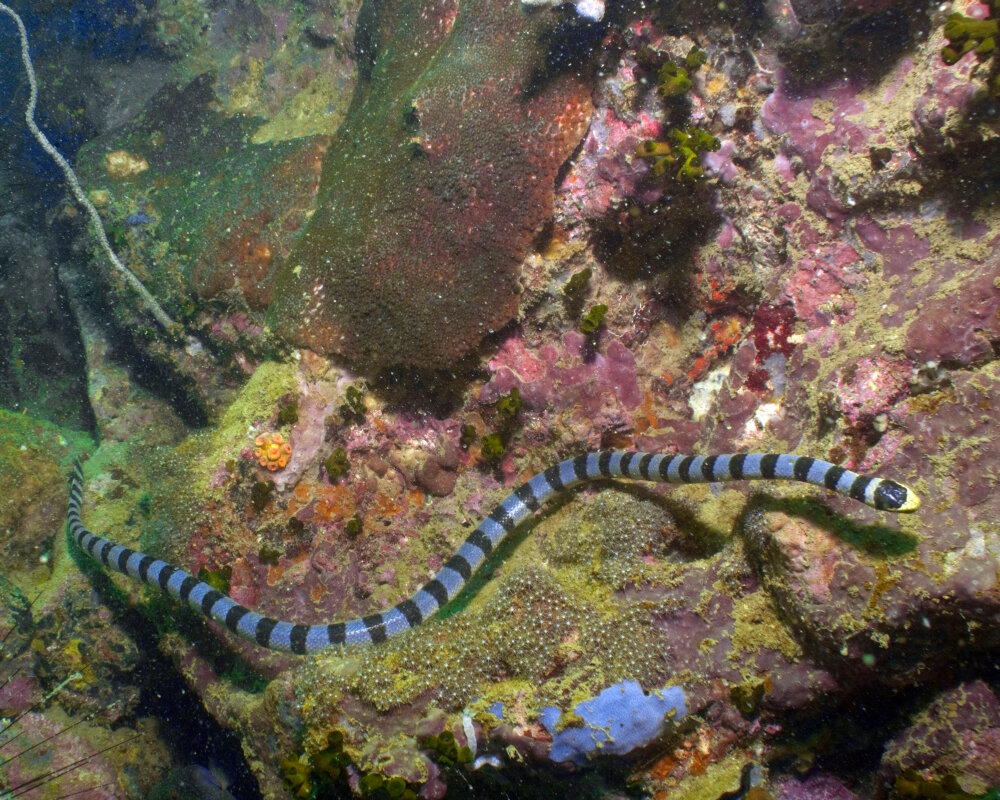
The banded sea snake (Laticauda colubrina) © Diverstef | Dreamstime.com
The banded sea snake shares characteristics with terrestrial snakes, such as ventral scales that allow it to crawl easily on land, but also features adaptations to its aquatic environment, including a laterally flattened tail that serves as a fin for swimming.
Geographic range
The banded sea snake inhabits the tropical and subtropical waters of the Indian ocean and the western Pacific ocean, from southeast Asia to central Pacific islands such as the Philippines.
Habitat
The banded sea snake can be found in coral reefs and rocky coastal areas, as well as in mangroves, sheltered lagoons and isolated beaches. It generally inhabits shallow waters up to about 66 feet deep.
The banded sea snake has adapted to its aquatic environment and the particular shape of its lungs allows it to dive to depths of up to about 197 feet in search of food.
Diet
The banded sea snake primarily feeds on eels, which it captures by injecting them with a potent neurotoxic venom. Although potentially dangerous to humans, it is generally non-aggressive.
This species plays an important ecological role in coral reefs by regulating fish populations, particularly eels.
Reproduction
The banded sea snake is oviparous and spends most of its life at sea, but returns to land, mainly on isolated beaches, to mate, lay its eggs, digest its food and shed its skin.
Did you know ?
The banded sea snake is capable of slowing its metabolic rate, allowing it to remain underwater for more than 30 minutes.
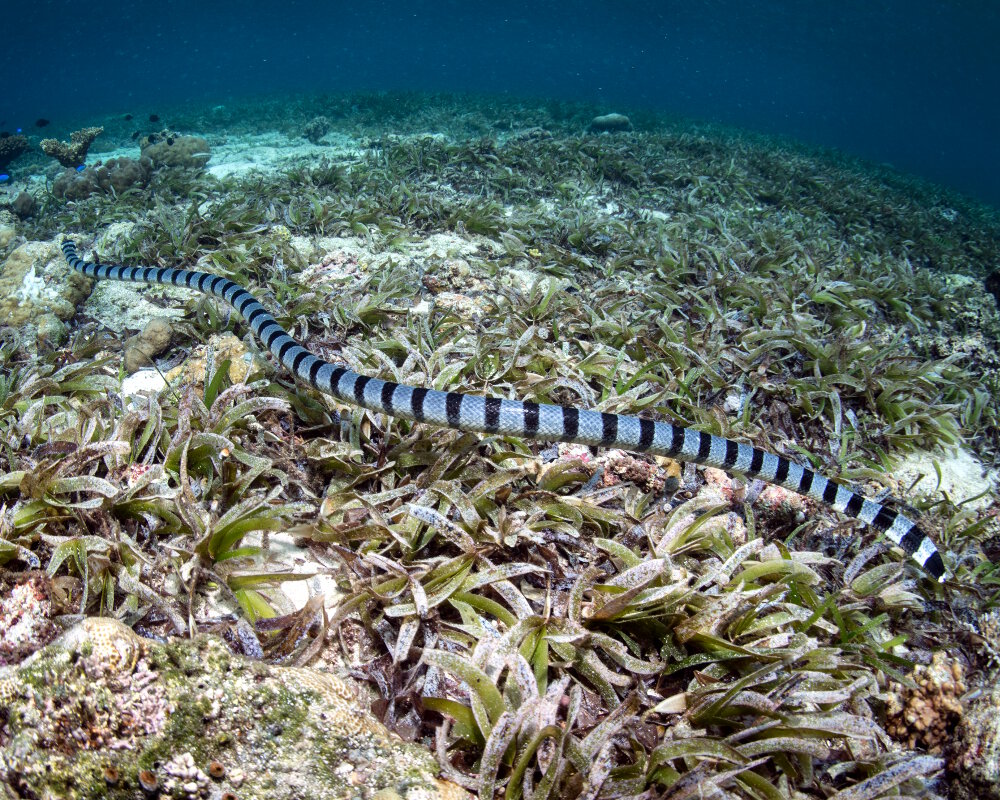
The banded sea snake (Laticauda colubrina) © Ethan Daniels | Dreamstime.com
The banded sea snake is listed as many other marine species within The IUCN Red List of threatened species. The banded sea snake appears in the IUCN Red List since 2010 within the category Least Concern !
Within the same genus
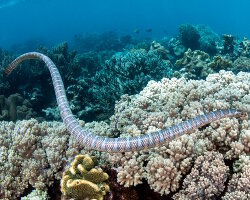
Black-banded sea krait
(Laticauda semifasciata)
(Laticauda semifasciata)
Within the same family

Olive sea snake
(Aipysurus laevis)
(Aipysurus laevis)
Discover also
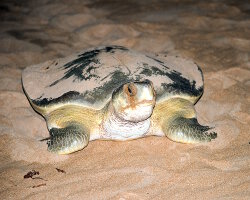
Flatback sea turtle
(Natator depressus)
(Natator depressus)
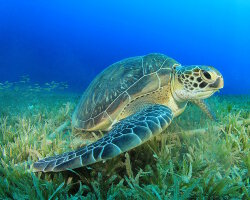
Green sea turtle
(Chelonia mydas)
(Chelonia mydas)
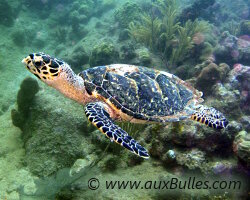
Hawksbill sea turtle
(Eretmochelys imbricata)
(Eretmochelys imbricata)
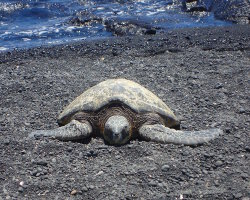
Kemp's ridley sea turtle
(Lepidochelys kempii)
(Lepidochelys kempii)
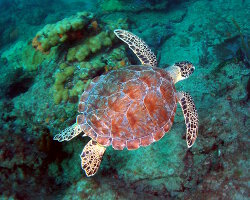
Loggerhead sea turtle
(Caretta caretta)
(Caretta caretta)
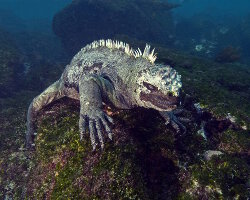
Marine iguana
(Amblyrhynchus cristatus)
(Amblyrhynchus cristatus)
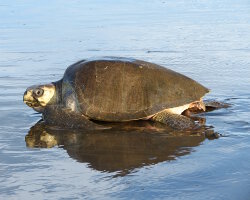
Olive ridley sea turtle
(Lepidochelys olivacea)
(Lepidochelys olivacea)
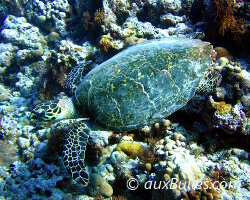
Sea turtle
(7 espèces)
(7 espèces)
Our latestUpdates

Monday, October 20th 2025
The Hawaiian archipelago, a volcanic gem of the pacific
Discover the Hawaiian archipelago, a volcanic paradise in the Pacific ocean where fiery mountains, lush forests and turquoise lagoons meet. Explore its islands, unique biodiversity and the geological forces that shaped this natural wonder.

Monday, October 13th 2025
Universal Epic Universe: the next-level immersive park
Discover Epic Universe, Universal Orlando's newest theme park. Dive into immersive worlds, spectacular attractions, and a breathtaking, one-of-a-kind experience.

Thursday, October 2nd 2025
The California sheephead
Discover the California sheephead, a colorful fish of the eastern Pacific. Learn about its appearance, diet, habitat in kelp forests, unique sex-changing ability and role in marine ecosystems.
Photo of the Day
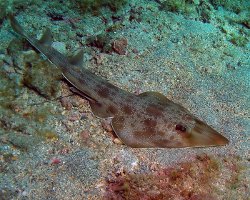
Poisson guitare de l'Atlantique
(Rhinobatos lentiginosus)
(Rhinobatos lentiginosus)
